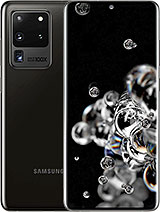Samsung Galaxy S20 Ultra - Exynos vs Snapdragon. By Mrwhosetheboss
Welcome to one of the stranger happenings in the smaller market, so you might know that every time Samsung makes a new flagship smartphone. They create two versions: one powered by an Enos chip and one powered by a Qualcomm Snapdragon chip and on the face of it. Who cares, but I spent some time with both of these versions of galaxy s, 20, ultra and I. Think the difference is so big. The Snapdragon version almost feels like a different small phone before example: performance and while benchmarks aren't everything. There are much better tests of power than just seeing how fast apps open, so I run an tutu on both and the Snapdragon is just way ahead: a 550 thousand versus 500 thousand.
It's almost a 10% jump, that's half a generational leap of performance and if you think that's a big gap, it gets so much bigger, see after running an tutu, once I decided to run it three more times continuously to see if either chip would overheat and yeah. After the second run. This Snapdragon chip was at 40 degrees, Celsius, which is good after the third run in jump to 42 and actually after the final one, it went down to 39, but this Enos after just two runs of the benchmark. It was at 59 degrees, 59 degrees. After run 3, it had managed to somewhat control that temperature.
It brought it out to 53 that last run and pushed it to 66 degrees. That is not a cool temperature but ok. Finally, the chip gets hotter. That's not something you're going to feel directly, but what it translates to is thermal throttling. The Enos starts dialing its performance back when it gets hot and because it gets hot so quickly, it's a problem.
So while the Snapdragon score fell from around 550,000 to about 500 45,000 over the course of these benchmarks, the Enos tanked falling from about 500,000 to around 450,000, so you're now looking at effectively 8 20% gap in performance, and it gets even worse. But first, if we take a look at the performance breakdown, you can see that, while Samsung's CPU is behind right from the get-go, the graphics or GPU is actually on par. But this is what's getting throttled. As the temperature starts to rise, the graphics performance is falling from nearly 22,000 to 15,000, but yeah. That's a synthetic benchmark.
Would an average user notice a gap in performance? Well, yes, and no for the most part of things happen out of pretty similar speed on both flicking through home screens loading up applications and so on. I couldn't tell the difference where I could, though, is in two specific use cases number one being prolonged gaming for short sessions. It didn't seem to matter what game I played. Both phones just flew through it, as you kind of expect for a firm that has ultra in its name, I even pulled up the dolphin Nintendo Wii emulator because you might know emulation is one of the most brutal tasks you can give to a CPU. But even then I couldn't pick Fault in either.
They were both running Animal Crossing at a completely locked frame rate, no drops at all the issue with Enos only started to come in with prolonged sessions, so after I carried this on for about an hour and then jumped to another heavy game called bright mobile. That's when you feel it. This is a resource, intensive game and the Enos just started to bottle it. You could almost feel the chipset screaming on the inside and the frame rate tanked to something like 15 frames per second moving back to the Qualcomm. No such issue: it was just 60 frames per second locked.
The second difference I saw super minor, but was in the camera UI. So, for example, shifting between the lenses is both smoother and faster. On snapdragon again, this could improve in an update. But it's just been my current experience and speaking of cameras. The snapdragon 1 even takes better photos to which you might be thinking.
How is that even possible? They have the exact same camera and they do. But it's easy to forget that, unlike with a PC where you'll choose a processor, and you'll choose a graphics card with small phones, the chipset contains everything. That's why it's called a system on a chip, so the difference between Enos and Snapdragon. It's not just CPU, it's the graphics, it's the modem and irrelevant to this case the image signal processors. So last year, for example, it was pretty well documented that the Snapdragon Galaxy S 10 took considerably better photos than the Enos Galaxy S 10 in terms of dynamic range and just straight up the ability to draw out detail, and that trend has continued here.
It's not a world apart. You can't really tell the difference at a glance and I don't want to overstate it, but it is a very consistent trend. You notice it mostly when cropping into your photos. The Snapdragon just appears able to bring out a sort of extra layer of detail. Textures that have almost disappeared on the Enos they're sharp, with Snapdragon again could be fixed in an update.
This is just my experience now. The other important tip for is power efficiency. Yes, both chipsets are cutting edge in terms of their fabrication process, but I was noticing carrying both phones with me on day-to-day basis. The Snapdragon would just finish a day with more battery left, so just to make sure I wasn't losing the plot. I put them side-by-side and tested it.
So right here, you can see that both phones are on 100%, so I unplugged them I opened a whole slew of applications. I went to the Play Store I downloaded some stuff, I played tennis, I watched, YouTube, pulled up a game of reverse II, ran benchmarks, and so on and so forth. You get the picture for three solid hours. Well, X. He lost finished on 59% battery, which would give it an expected screen on time of about seven hours, but Snapdragon still had 71%, which should give that phone an estimated screen on time of like nine hours in a similar test.
That's the difference between good battery and off-the-charts amazing battery. It literally burns were on 1080p at 60 Hertz, so not their most demanding state, but it's still very, very impressive, and just to make it a fair test. They were on the same brightness, they heard the same apps installed on them and both phones have had less than 10 charging cycles. Okay, so you're, probably starting to get the picture here, I'm sure there will be cases where the X naught comes out on top, but in terms of the key pillars, the Snapdragon phone is just better. So it starts to beg the question of why? Why does Samsung bother with Enos 1 or just pick the best chip and stick with it? Well, the thing is: Samsung: are the makers of the Enos chips so in their ideal, world X Enos is all they'd use instead of buying components from another company like Qualcomm who's gotta take their own share of profits.
If Samsung could just use their own parts, they'd save a ton of money not to mention they'd have more flexibility. If Samsung decide, they want to sell a 4G variant of their phone for places like India, where 5g infrastructure barely exists. They can do that, whereas Qualcomm bundles their chips with mandatory and expensive 5g modems. That a lot of the world can't really take advantage of the problem is that Samsung's chips can't be sold globally. Really, when you send a text message on any phone data gets converted to radio waves.
However, there are actually two different ways. This conversion can occur. You've got CDMA, which is used by a lot of the carriers in the US and a few other nations and then GSM for pretty much the rest of the world a long story. Short chips have historically been built with CDMA in mind, so they just work better for the most part in the US and other CDMA regions. But the obvious question then becomes: why doesn't Samsung just add this CDMA functionality to their own Enos and then use them in the u.
s. ? Well, if you search online about it, you won't really find one consistent answer, but the way I see it. There are three options: I would be they're actually having Qualcomm on boards eases supply chain. Stress you think about it. Samsung sells millions upon millions of flagship phones so having another company producing parts for them.
Consider ease that workloads' scenario. B is that Qualcomm doesn't let them that company has some insane amount of patents relating to the CDMA standards, so it's possible that Samsung would be breaching some of them if it tried to add them into its own chip or C is just that Qualcomm and Samsung have some sort of agreement, or even just a mutual understanding. The Samsung keeps their x NOS chips out of the US, and in return they get first dibs on Qualcomm's best in 2017, for example, it looked like Samsung bought Qualcomm's entire first batch of flagship, Snapdragon 805 chips to the point where other manufacturers like LG, they were stuck with the Snapdragon 820 one from the year before anyways, whatever the reasoning, the important message here is that, while both of these phones are technically the Galaxy S 20 ultra they're pretty different, and it's pretty clear that in the US, as well as other snapdragon regions, you're getting a better deal, especially actually, if you factor in that the U. S. s xx, Ultra is cheaper over here.
You pay 1200 pounds which, if you convert to dollars, is around $70 more to be honest, everything's more expensive. In the UK so I'm kind of used to that there is a good chance. The Enos could be patched, but only thing. Any kind of patch is going to bridge that performance gap. The Snapdragon is a phone that performs better over a longer period of time and just to kind of bring this all together.
There's a bittersweet lining to the whole thing. Samsung recently announced that they're shutting down their CPU division, they'll still likely have Enos chip cells, but instead of building their own CPU cores for themselves, they're going to buy pre-built ones. So the good thing is that in future the performance disparity might be less versus poor cons, but the downside is that you've now got one less company competing in the mobile CPU market, and usually competition is what pushes companies to innovate. So what do you think if you enjoyed this video, a sub to the channel, would be incredible catch you next time.
Source : Mrwhosetheboss



























